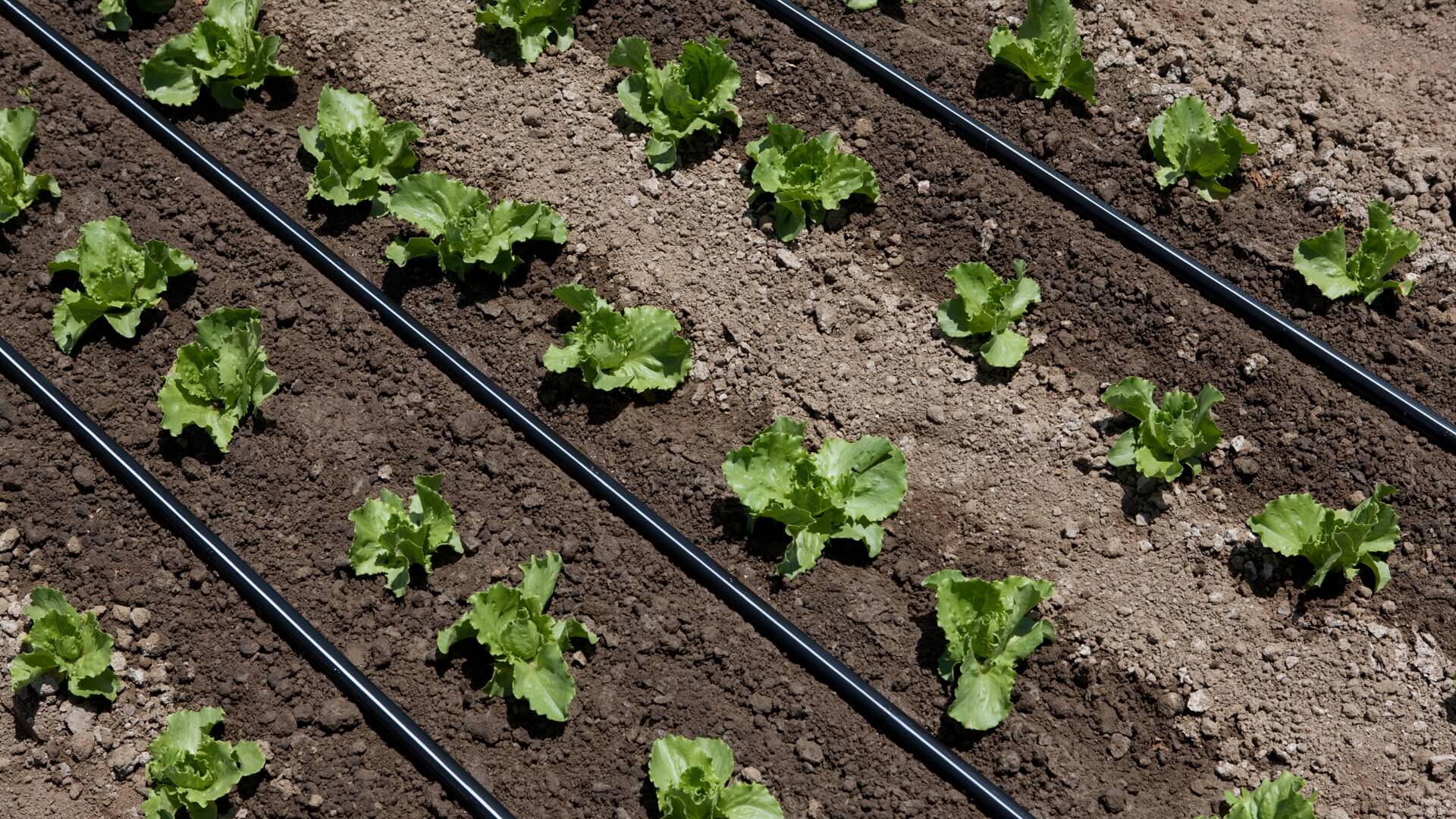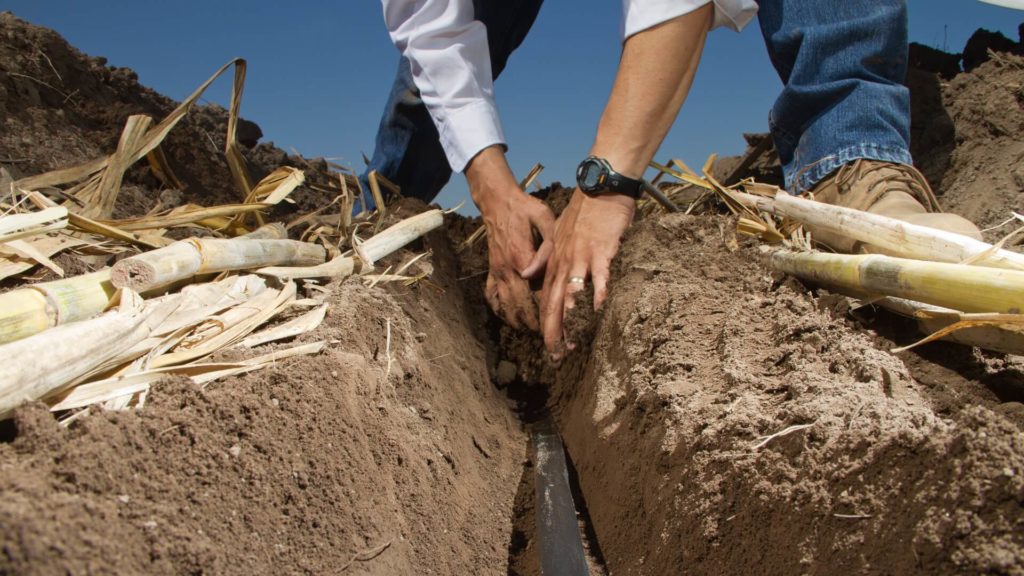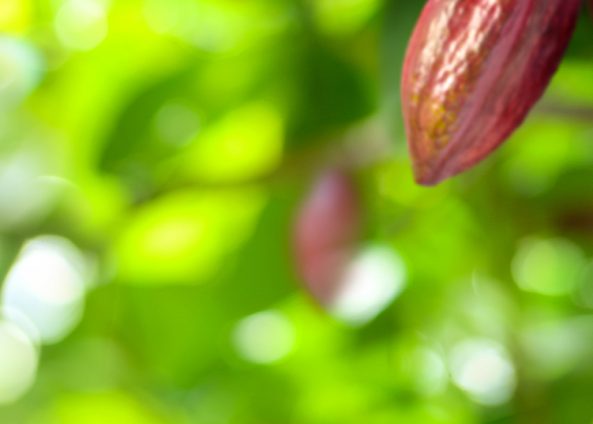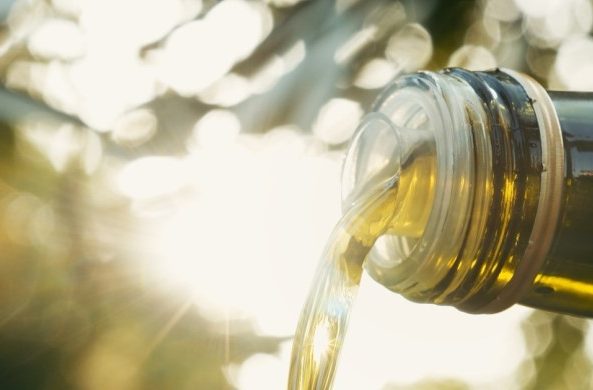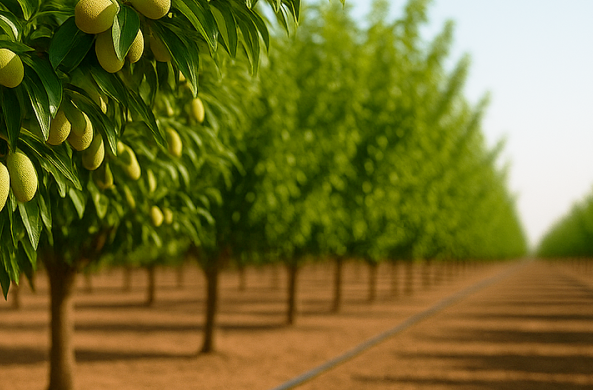
Exploring Different Types of Irrigation and Their Applications
Irrigation plays a vital role in agricultural practices, enabling efficient water supply to crops. There are various irrigation methods, each tailored to suit specific landscapes, water availability, and crop requirements. In this article, we will provide a comprehensive overview of different irrigation methods: surface irrigation, pivot irrigation, sprinkler irrigation, drip irrigation, and subsurface drip irrigation. Let’s dive into the details of each method before exploring their advantages and disadvantages.
Surface irrigation
Surface irrigation, also referred to as flood irrigation or furrow irrigation, has been around for a long time. In fact, it was the first and most ancient method of irrigation.
Surface irrigation refers to the application of water onto a field or a plantation with the help of gravitation alone. Whether it is flood or furrow, in this method, water is diverted directly onto the surface of the soil using no emitters or components whatsoever.
The practice of surface irrigation is thousands of years old and represents about 95 per cent of common irrigation activity today. The first water supplies were developed from stream or river flows onto the adjacent flood plain through simple check-dams and a canal to distribute water to various locations. With the advent of modern equipment for moving earth and pumping water, surface irrigation systems were extended to upland areas and lands quite separate from the flood plain of local rivers and streams.
Advantages and disadvantages of surface irrigation
Advantages
- Relatively low cost
- Requires no technology
- Requires relatively low level of knowledge for operating and maintaining
Disadvantages
- Very low water use efficiency
- Contribution to greenhouse gas emissions due to common practices
- Leaching of fertilizers
- Water logging
- Pollution of water sources due to leaching
- Impaired nutrient application
Pivot irrigation
A center pivot irrigation system is a mechanized, pressurized irrigation system. The original and most used style of pivot irrigation applies water in a circular pattern, pivoting around a central point in the middle of the field. A pivot system consists of a lateral, stainless-steel pipeline mounted across adjacent, mobile truss structures that support the pipe. Each truss is mounted on motorized wheels, allowing the entire length of pipe to move through the field. Sprinkler nozzles are installed along the pipeline or hang down from the lateral pipe on smaller pipes or cables. Flow rates can easily be adjusted in a center pivot system, and pressure regulators can be utilized to create either a high-flow or low-flow system depending on water use needs.
Since the introduction of center pivot irrigation more than 70 years ago, the unique circle pattern of a field irrigated with a pivot system has become common in many parts of the world.
A lateral pivot system is similar to a traditional center pivot system. However, a lateral move machine moves in a straight line rather than a pivot, allowing for better coverage in a square or rectangular field. Lateral move irrigation systems are also more labor-intensive through the growing season than traditional center pivot systems.
Advantages and disadvantages of pivot irrigation
Advantages
- Economical for larger operations
- Under windless conditions, can provide good distribution and plant uniformity
- Useful for pesticide applications
Disadvantages
- Relatively very high initial investment
- In the case of a center pivot, inefficient for square or rectangular fields
- Might encourage plant disease
- Under windy conditions, might provide poor water distribution uniformity
- Cannot irrigate the whole field at once
- High energy consumption
Sprinkler irrigation
A sprinkler irrigation system allows application of water under high pressure with the help of a pump. It releases water similar to rainfall through small-diameter nozzles placed in the pipes. Water is distributed through a system of pipes and sprayed into air, and irrigates most soil types well due to a wide range of discharge capacity.
The wetting pattern from a single rotary sprinkler, as usually designed, is not very uniform. Normally, the area wetted is circular. For good uniformity, several sprinklers must be operated together so that their patterns overlap. Each emitter has a unique wetting pattern. This determines the specific spacing between sprinklers to achieve the best uniformity.
Micro-sprinkler systems and their advantages
Micro-sprinklers are a great choice when a larger volume of water is needed than standard drip emitters can provide. Micro-sprinklers can be incorporated directly into a drip irrigation system as they come in a variety of connection sizes and types for easy attachment to risers or assemblies. They are commonly used to irrigate trees in both commercial and residential settings, but also work well for large densely planted landscapes, greenhouses, and even for frost protection.
Most fixed and pressure compensating drip emitters deliver between 0.5 and 2.0 L/h, with a few exceptions to either side. However, this volume of water will not be adequate for some needs. Micro-sprinklers bridge the gap between drip emitters and sprinklers. Like other drip systems, micro-sprinklers operate at low pressure. Micro-sprinklers can deliver a wide range of flow rates and application rates, and can go up to tens of liters per hour and more.
Advantages and disadvantages of sprinkler irrigation
Advantages
- Affordable and easy to set up
- Under the right conditions, very good water distribution uniformity
- A large range of flow rates and wetting patterns
- Suitable for all soil types
- Can be used for other purposes as well, such as cooling during high temperature
- Perfect solution for frost protection
- Suitable for the application of fertilizers
- Suitable for fertigation and chemigation
- Able to deliver very high application rates
Disadvantages
- Higher cost per emitter (compared to drip)
- Water distribution uniformity reduced under windy conditions
- Usually has higher pressure requirement.
After the well published merge with Jain Irrigation and our combined efforts to provide the best irrigation solutions for sustainable agriculture, we now offer the widest range of sprinklers on the market. From greenhouse foggers with a microscopic droplet size to the world-famous heavy-duty impact sprinklers and everything in between.
Drip irrigation
Drip irrigation is a type of micro-irrigation system in which water is emitted directly to the soil through a network of pipes and emitters. Compared to other irrigation methods, drip irrigation is highly efficient if properly designed, installed, operated, and maintained/managed.
The use of plastic to better hold and distribute water was developed in Australia. The plastic emitter in drip irrigation was developed in Israel in 1964, and one of the pioneers was Plastro, now Rivulis. By the 20th century, drip irrigation had become the most efficient means of applying water to crops, and it is becoming increasingly popular.
Drip irrigation systems consist of various components channeling water from its source: pump or pressurized water source, water filters, backwash controller, pressure control valve, distribution lines, meters, hand-operated or electronic control block valves, tubes, fittings, and accessories, emitting devices, and chemical injectors. Without effective filtration, the equipment can be clogged, and most large drip irrigation systems include some type of filter to prevent this.
How does drip irrigation conserve water? In short, drip irrigation reduces waste from evaporation or runoff by providing more targeted and efficient watering to plants. This results in increased water conservation and improved overall plant health and growth.
Drip irrigation is also ideal for delivering nutrients directly to the root zone. This method is called fertigation. This is probably the most efficient way of fertilizing crops when it comes to precision and uptake efficiency.
Drip irrigation is applicable to pretty much any crop and cultivation method you can think of – open field vegetables, fruit tree plantations, greenhouses and more. Most monocultures and row crops are ideal for drip irrigation due to the uniformity and precision it offers.
Subsurface drip irrigation
Subsurface drip irrigation (SDI) is a low-pressure, high efficiency irrigation system that uses buried drip tubes or drip tape to meet crop water needs. These technologies have been a part of irrigated agriculture for decades, with the technology advancing rapidly in the last 30 years. A subsurface system is flexible and can provide frequent light irrigations. This is especially suitable for arid, semi-arid, hot, and windy areas with limited water supply, but also for any soil type or terrain. With a well-maintained system, water application is highly uniform and efficient. Wetting occurs around the tube, and water typically moves out in all directions in specific patterns depending on soil characteristics and other factors.
Subsurface irrigation saves water and improves yields by minimizing surface water evaporation and reducing the incidence of weeds and disease. Water is applied directly to the root zone of the crop and not to the soil surface, where most weed seeds germinate after cultivation. As a result, germination of annual weed seeds is greatly reduced. When managed properly with a fertilizer injector, water and fertilizer application efficiencies are enhanced, and labor needs are reduced. Field operations are also possible, even when irrigation is applied.
Rivulis drip irrigation solutions
Rivulis’ extensive range of drip irrigation solutions features integrated emitters (drip tape) and molded emitters (drip line), along with pressure compensated, no drain and anti-siphon models.
Built to the highest standards of engineering and quality control, our drip lines and drip tapes ensure maximum resistance to clogging, maximum uniformity and maximum yield at harvest.
Comparing the irrigation methods
To choose an irrigation method, a farmer must know the advantages and disadvantages of the various methods. He or she must know which method suits the local conditions best. Unfortunately, in many cases there is no single best solution: all methods have their advantages and disadvantages. Testing of the various methods under the prevailing local conditions provides the best basis for a sound choice of irrigation method.
The suitability of the various irrigation methods (i.e. surface, pivot, sprinkler, drip or SDI) depends mainly on the following factors:
- natural conditions
- type of crop
- type of technology
- previous experience with irrigation
- required labor inputs
- costs and benefits.
This table offers an easy comparison between the major types of irrigation
|
Type of irrigation |
Surface |
Sprinkler |
Subsurface drip irrigation |
Drip |
Center pivot |
|
Suitable for |
Flat areas, various crops |
Landscaping, various crops |
Horticulture, large-scale agriculture, landscaping |
Horticulture, large-scale agriculture, landscaping |
Large-scale agriculture |
|
Water efficiency |
Moderate |
Moderate to high |
Very high |
Very high |
High |
|
Initial setup cost |
Low |
Moderate |
Moderate to high |
Moderate to high |
High |
|
Operating cost |
Low |
Moderate |
Low |
Low |
Moderate |
|
Nutrient management |
Low precision |
Moderate precision |
High precision |
Very high precision |
High precision |
|
Adaptability to different environments |
Limited |
Moderate |
Limited |
High |
High |
|
Potential for automation |
Low |
Moderate |
High |
High |
High |
|
Maintenance Requirements |
Moderate |
Moderate |
Low |
Moderate |
Moderate |
Conclusion
As noted, there is a vast array of irrigation options available on the market. It is very important to understand all of the possibilities before making a decision.
Each irrigation solution has both advantages and disadvantages, just like everything else in this world. It is paramount to understand them all and see which are relevant and to what degree. That is the only way to make a sensible decision.
We at Rivulis not only offer you the widest variety of irrigation solutions, we also take pride in adapting the perfect solution for your specific needs and circumstances.
Any kind of soil, anywhere, anytime – we are here to consult and come up with what you really need to make the best out of your investment.



